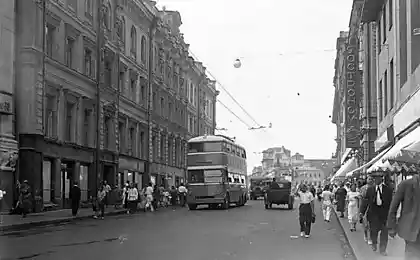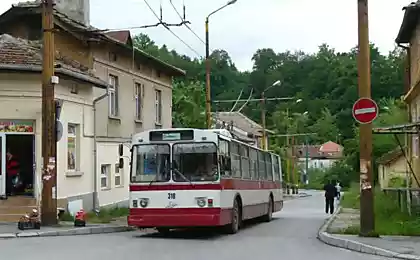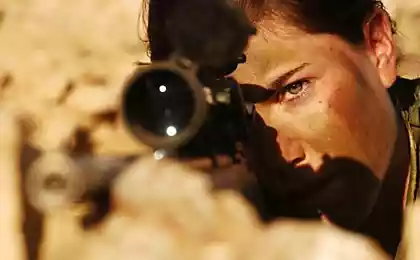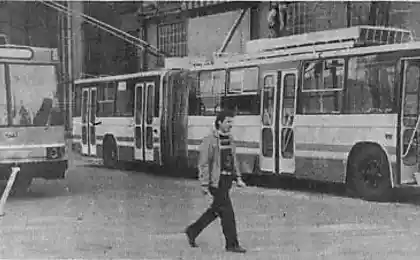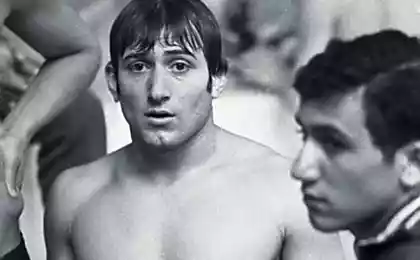1452
Gyrobuses. Economical, but steep.

The concept of a flywheel-powered bus was developed by the Swiss firm Oerlikon in the 1940s. The gyrobus was developed as an alternative to battery buses, which were conceived as an alternative to trolleybuses on routes where the construction of a contact network was not justified.
The first demonstration trips of the gyrobus (carrying passengers) took place in 1950. For another four years, demonstration tours were held in different cities.
The energy accumulator for the gyrobus is a flywheel (weighing 1.5-3 tons), which is accelerated to three thousand revolutions per minute by an electric motor.

It is all about the significant advantages of this design. Firstly, it is practically silent, secondly, much more economical than a conventional internal combustion engine, thirdly, this type of transport is environmentally friendly, and fourthly, it allows you to do without a contact network and rails, such as on trolleybuses and trams.
The electric motor that accelerated the flywheel received energy through three short barbells (the engine was three-phase), installed on the roof of the gyrobus. The electric motor was switched on only occasionally. To do this, along the route of the gyrobus, "fueling stations" were equipped (usually at some stops). At these points, the barbells of the gyrobus rose and touched the contacts of the three-phase electrical network installed above the stop. After accelerating the flywheel to the desired turns, the bars were lowered, the engine was turned off, and the gyrobus followed until the next “refueling”.

The power reserve at one refueling station is about 6 km, but to ensure the reliability of the system, the gyrobus was refueled every 2 km. With such an installation, the gyrobus accelerated to 50-60 km / h. The brakes here were also electric, the energy from braking allowed the flywheel to spin even longer i.e. there was a recovery. “Refueling” the gyrobus took from 30 seconds to 3 minutes. To reduce refueling time, the voltage was raised from the original 380 volts to 500.
The hardest thing is that in the average size of the gyrobus, a three-ton flywheel is used, the linear speed of the rim of which reaches 900 km / h
Pictured: Hyrobus chassis

Only in 3 countries of the world, gyrobuses were actually used on passenger routes. These are Switzerland, the Belgian Congo (now the Democratic Republic of Congo) and Belgium.

Advantages:
Silent move
Environmentally friendly
Does not require a continuous contact network (unlike a trolleybus)
The ability to flexibly change the route network if necessary.
Deficiencies
Large weight - gyrobus, designed to carry 20 people for 20 kilometers, should have a flywheel weighing 3 tons
Rotating at a speed of 3000 revolutions per minute, the flywheel requires special safety measures (linear speed of the flywheel rim reaches 900 kilometers per hour).
It is difficult to control the gyrobus, since its flywheel has the properties of a gyroscope (seeks to maintain a constant position in space).

The age of gyrobuses was short-lived - in the 60s all systems of gyrobus transport were closed. The G3 is the only surviving gyrobus in the world. It is kept in the Flemish Museum of Trams and Buses in Antwerp.

Author: Bus
-img8--
